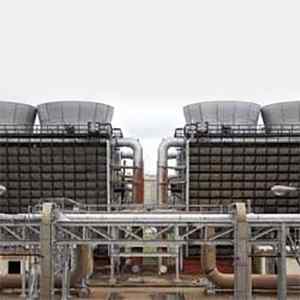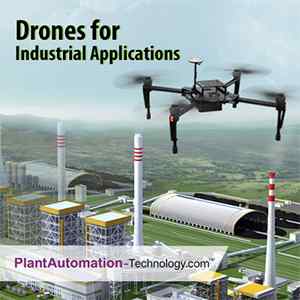Why Is Automation Important For Turbines, Fans, And Energy Efficiency?

Introduction:
Automation has emerged as a crucial element across diverse industrial sectors, significantly contributing to heightened efficiency, lowered operational costs, and the optimization of energy consumption. This holds particularly true for turbines, fans, and overall energy systems. This article delves into the essential role automation plays in enhancing performance and energy efficiency within these vital domains.
1. Precision Control: Precision control, facilitated by automation systems, revolutionizes the operation of turbines and fans by leveraging advanced sensors and monitoring devices. These sophisticated sensors, strategically placed throughout the equipment, continuously collect real-time data on parameters such as temperature, pressure, rotational speed, and airflow rates. This wealth of information is then processed by complex control algorithms within the automation system. The algorithms analyze the data and, based on the findings, make dynamic adjustments to the operation of turbines and fans. This enables the system to adapt to varying conditions, optimizing parameters such as speed, flow rates, and temperatures in real-time.
The overarching goal is to ensure that the equipment operates at peak efficiency, mitigating inefficiencies, reducing energy waste, and enhancing overall performance. Precision control through automation not only allows for immediate adaptations to changes in demand or environmental conditions but also contributes significantly to efficiency improvements, ultimately extending the lifespan of the equipment. The integration of automation in this manner empowers industrial processes with a level of accuracy and responsiveness that manual control would find challenging to achieve.
2. Energy Efficiency: Automation assumes a crucial role in elevating energy efficiency in turbines and fans, presenting a myriad of advantages that align with sustainability goals. The primary benefit stems from automated control systems' capacity to dynamically fine-tune operational parameters based on evolving conditions. Through constant monitoring of factors like demand, load, and environmental variables, these systems guarantee that the equipment functions at optimal energy-efficient levels.
The dynamic adjustment of operational parameters, including speed, flow rates, and other critical variables, allows turbines and fans to precisely match their output with the current requirements. This adaptive capability minimizes energy waste that often occurs when systems operate at suboptimal levels.
Consequently, the overall energy consumption is streamlined, leading to lower operating costs for the industrial processes.
Moreover, the reduction in energy waste and optimized operation contribute to a notable decrease in the carbon footprint associated with these systems. Automated control systems enable a proactive approach to energy management, aligning with sustainability goals by promoting responsible resource consumption and environmental stewardship.
Introducing automation into turbines and fans not only leads to increased energy efficiency but also translates into tangible economic and environmental advantages. The combination of decreased energy wastage, reduced operating costs, and a smaller carbon footprint highlights the pivotal role that automation plays in driving sustainability initiatives within industrial settings.
3. Predictive Maintenance: Automation's impact on turbines and fans goes beyond operational control, ushering in a paradigm shift in maintenance strategies, notably through the adoption of predictive maintenance. Constantly surveilling the health and performance of these pivotal components, automation systems, enhanced with sensors and data analytics capabilities, facilitate early identification of potential issues. This proactive maintenance approach proves transformative, reducing downtime, prolonging equipment lifespan, and mitigating the necessity for expensive emergency repairs.
The core of predictive maintenance lies in the real-time data gathered by sensors strategically placed on turbines and fans. These sensors capture key parameters such as temperature, vibration, and performance metrics, providing a comprehensive view of the equipment's condition. Advanced data analytics algorithms then analyze this information to detect patterns indicative of impending issues.
This early identification of potential faults or failures offers several noteworthy advantages. Firstly, it minimizes unplanned downtime by addressing issues before they escalate into critical failures. Scheduled maintenance during periods of low demand ensures that industrial processes remain uninterrupted. Secondly, the extension of equipment lifespan is a direct outcome of addressing potential problems at an early stage. By keeping turbines and fans operating within their optimal conditions, premature wear and tear are mitigated.
Predictive maintenance further plays a crucial role in substantial cost reduction. Steering clear of emergency repairs, frequently linked to unforeseen failures, empowers organizations to plan and allocate budgets for maintenance activities more efficiently. This strategic resource management results in overall cost savings and heightened operational efficiency. Moreover, the increased reliability of turbines and fans stands as evidence of automation's influence on industrial operations. The capability to foresee and address potential issues promotes informed decision-making, ultimately yielding machinery that is more dependable and efficient.
In essence, automation's integration into turbines and fans not only optimizes operational control but also revolutionizes maintenance practices. The foresight provided by predictive maintenance aligns with the broader goal of maximizing equipment longevity, minimizing disruptions, and achieving cost-effective and reliable industrial processes. The proactive stance afforded by automation ensures that organizations can effectively manage and maintain their critical assets, ushering in a new era of efficiency and reliability in industrial settings.
4. Integration with Smart Grids: Automation's impact extends into the broader realm of energy systems, particularly in the seamless integration with smart grids. This integration revolutionizes the coordination between turbines, fans, and the electrical grid, offering substantial benefits in terms of load management, grid stability, and overall energy efficiency. The synchronized operation of these systems with grid demand represents a pivotal advancement facilitated by automation.
In the context of smart grids, turbines and fans equipped with automated systems can dynamically adjust their operation based on real-time demand fluctuations. This synchronization allows for precise load management, ensuring that energy production aligns with the varying needs of the grid. By responding to the ebb and flow of electricity demand, automation contributes to grid stability and helps prevent overloads or underutilization of resources.
A noteworthy benefit of automation in this context is its capacity to adapt to real-time fluctuations in electricity prices. Automated systems possess the capability to analyze pricing data and modify the operation of turbines and fans for the optimization of energy consumption patterns. In peak periods with elevated electricity prices, the system can curtail energy consumption or transition to more cost-effective sources. Conversely, during periods of reduced demand or lower prices, the system can operate at heightened efficiency levels, thereby maximizing cost savings.
This integration with smart grids is crucial for achieving a balance between energy supply and demand, promoting sustainability, and reducing overall costs. The dynamic responsiveness of automated systems ensures that energy resources are utilized efficiently, and the grid operates stably and reliably.
The integration of automation into smart grids marks a significant advancement in optimizing energy systems. The synchronized operation of turbines and fans in response to grid demand, combined with real-time adaptability to electricity prices, not only enhances load management and grid stability but also promotes cost-effective and sustainable energy consumption patterns.
Automation's role in this scenario emphasizes its crucial contribution to shaping the future of efficient and intelligent energy management systems.
5. Process Optimization: Automation serves as a cornerstone for achieving comprehensive process optimization, transcending basic control functions to reshape workflows, coordinate multiple processes, and enhance resource allocation within industrial settings. This holistic approach to automation yields multifaceted benefits, ranging from increased overall efficiency to improved product quality and waste reduction.
At the core of optimizing processes is the ability of automated systems to streamline workflows. Tasks that traditionally required manual intervention can now be seamlessly executed through automated processes, reducing delays and improving the overall speed and efficiency of operations. This not only accelerates production cycles but also ensures a more synchronized and error-free workflow.
Furthermore, automation facilitates the coordination of multiple processes within a production environment. Integrated automation systems can orchestrate various stages of manufacturing, ensuring smooth transitions and handovers between different tasks. This level of coordination enhances efficiency by minimizing downtime, reducing bottlenecks, and maximizing the utilization of resources.
Optimizing resource allocation is another pivotal aspect of automation's impact on industrial processes. Automated systems can dynamically allocate resources such as energy, raw materials, and manpower based on real-time data and demand fluctuations. This adaptive resource management ensures that resources are utilized efficiently, contributing to cost savings and sustainability goals.
The cumulative effect of process optimization through automation extends to improved product quality. The precision and consistency achieved by automated control systems result in products that meet stringent quality standards. This not only enhances customer satisfaction but also reduces the likelihood of defects and the need for costly rework.
Additionally, automation plays a key role in waste reduction. By fine-tuning processes and minimizing variations, automated systems contribute to a more controlled and predictable production environment. This, in turn, leads to less waste of raw materials and energy, aligning with environmentally conscious practices.
The impact of automation on process optimization is revolutionary for industrial operations. Through the streamlining of workflows, coordination of processes, and optimization of resource allocation, automated systems enhance overall efficiency, reinforce product quality, and actively contribute to sustainability initiatives. The incorporation of automation emerges as a strategic necessity for organizations aiming to excel in a competitive landscape, achieving operational excellence, and meeting the demands of a dynamic and evolving industrial ecosystem.
6. Safety and Reliability: Automation stands as a cornerstone for ensuring safety and reliability in industrial environments, offering a range of features that mitigate risks associated with manual intervention and enhance overall operational dependability. These safety measures not only reduce the likelihood of accidents but also establish a consistent and error-free operational framework.
A primary safety benefit of automation is its ability to minimize the need for manual intervention in hazardous environments. Tasks that involve exposure to dangerous conditions or substances can be performed by automated systems, reducing the risk of accidents and protecting human operators from potential harm. This is particularly critical in industries such as chemical processing, where exposure to toxic substances is a significant concern.
Consistent and reliable operation is another hallmark of automation in ensuring safety. Automated systems operate with precision and adherence to predefined parameters, minimizing the potential for human errors that could lead to accidents or equipment failures. The reliability of automated processes contributes to a stable and predictable operational environment, which is crucial for industries where deviations can have severe consequences.
In emergencies, automated systems demonstrate their rapid response capabilities. These systems can detect anomalies or hazardous conditions in real-time and trigger immediate protective measures or shutdown protocols. This swift response minimizes the impact of emergencies, prevents escalation of incidents, and safeguards both personnel and equipment.
Additionally, automation supports the implementation of safety protocols and standards consistently. By adhering to predefined safety measures, automated systems ensure that every operation follows established safety guidelines, reducing the risk of accidents or deviations from safety standards.
The contribution of automation to improving safety and reliability is multifaceted. It diminishes the necessity for human intervention in hazardous environments, lowers the likelihood of errors, and swiftly responds to emergencies. The incorporation of automation into industrial processes not only protects personnel but also enhances the overall dependability and resilience of operations, underscoring its crucial role in ensuring a secure and efficient working environment.
Conclusion:
The integration of automation in turbines, fans, and energy systems is indispensable for achieving higher levels of efficiency, sustainability, and reliability. As industries continue to prioritize energy conservation and environmental responsibility, the role of automation in optimizing these crucial components will only become more significant. Embracing advanced automation technologies is key to staying competitive, reducing operational costs, and contributing to a greener and more sustainable future.







